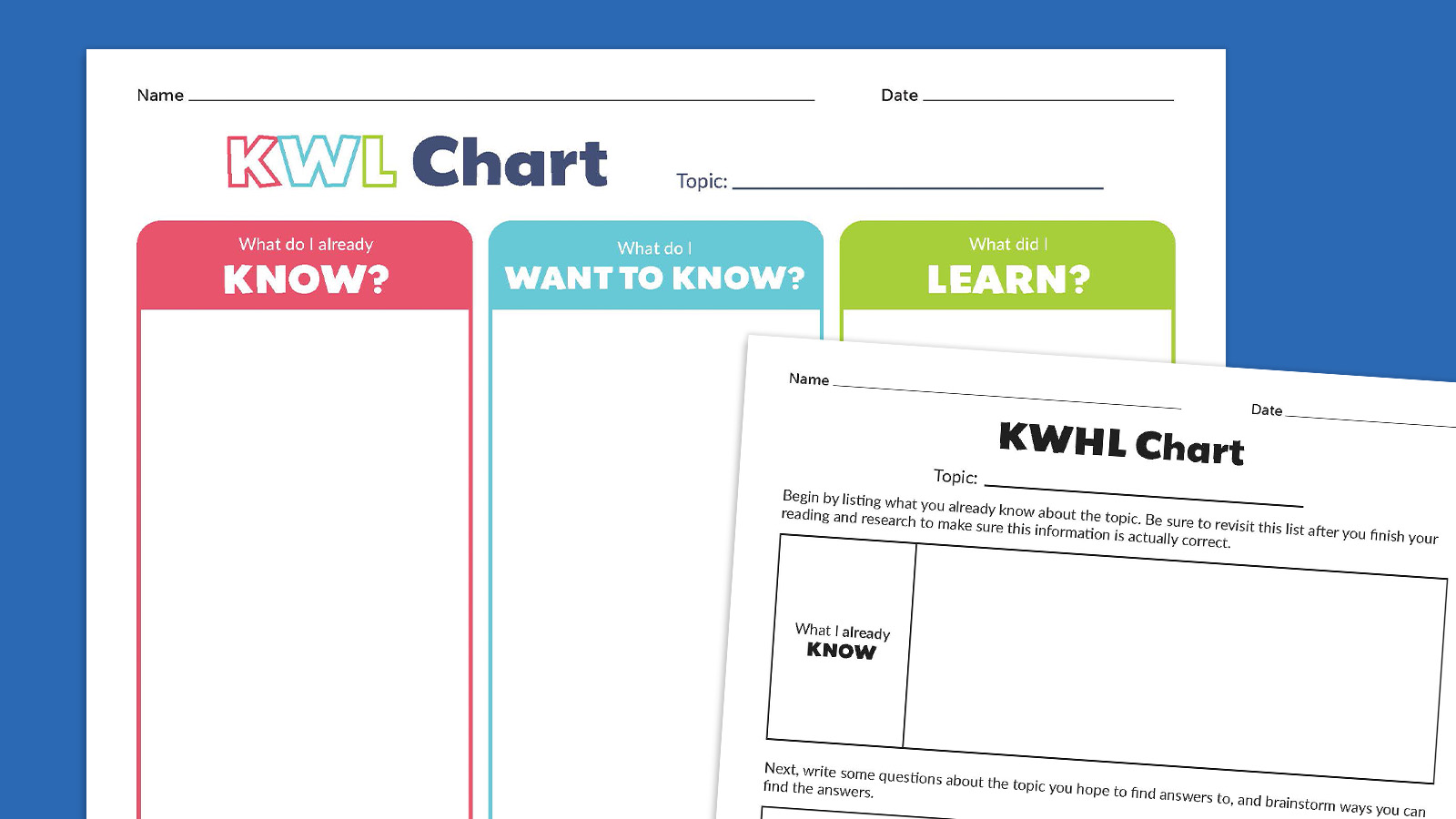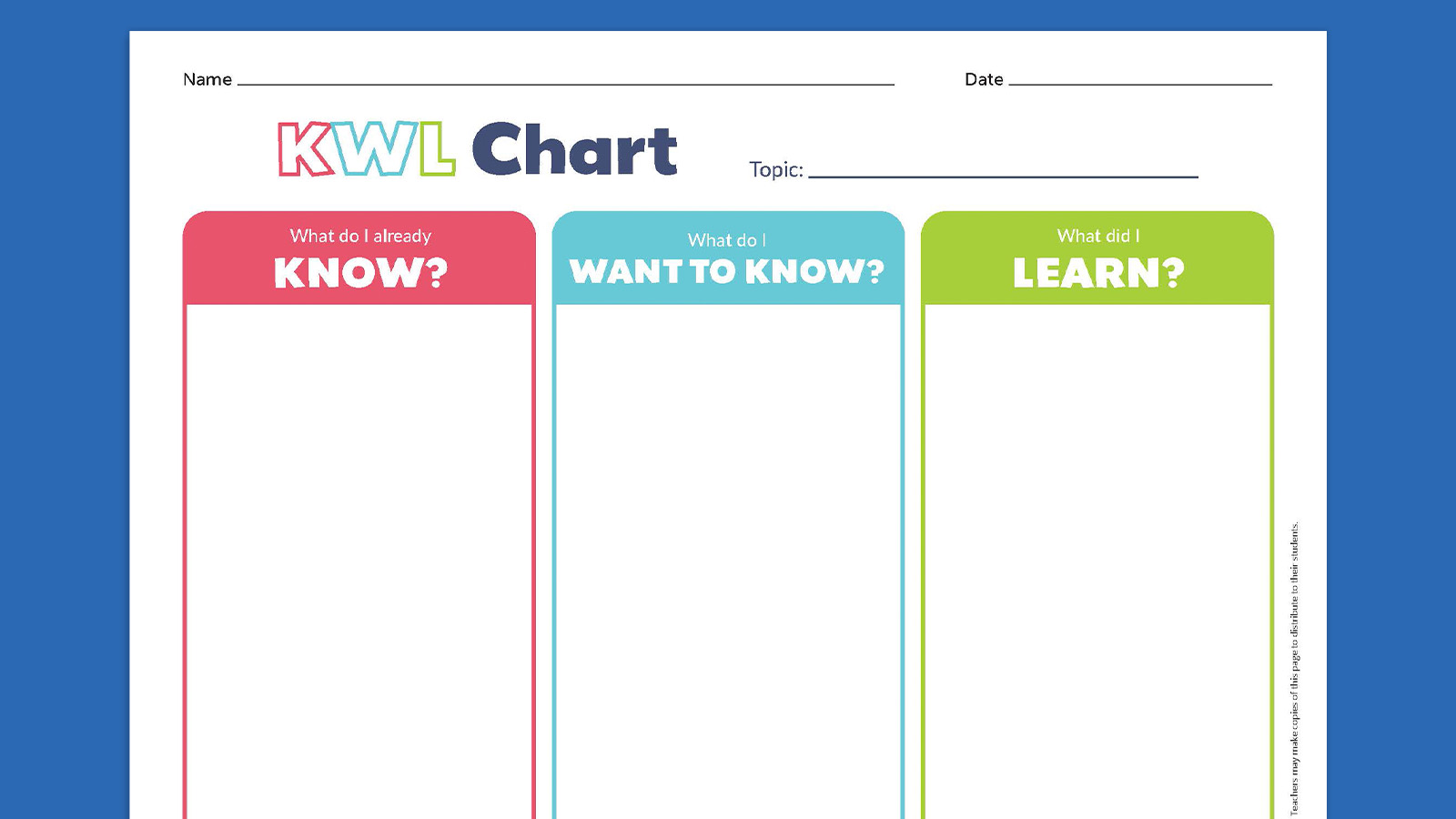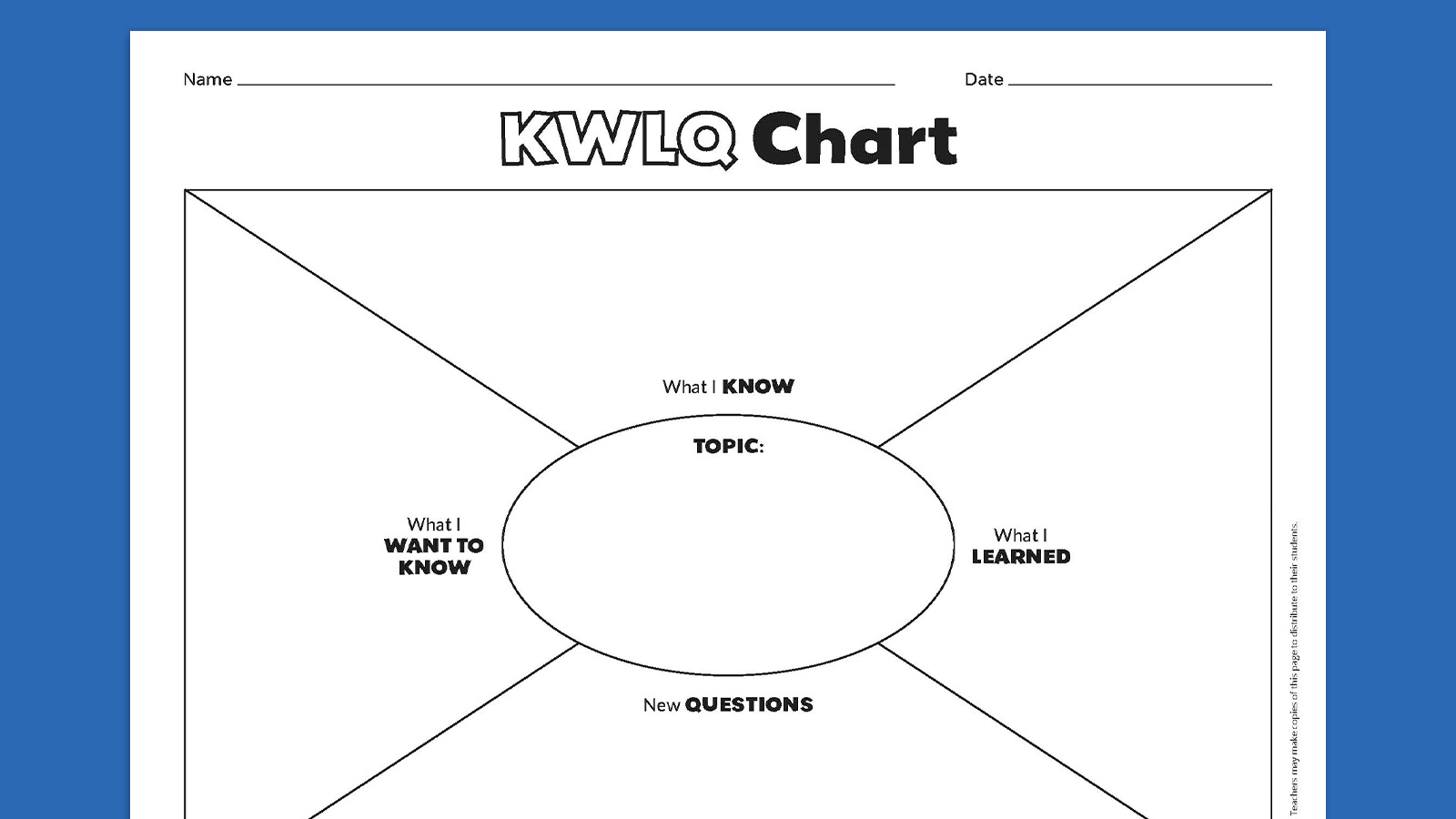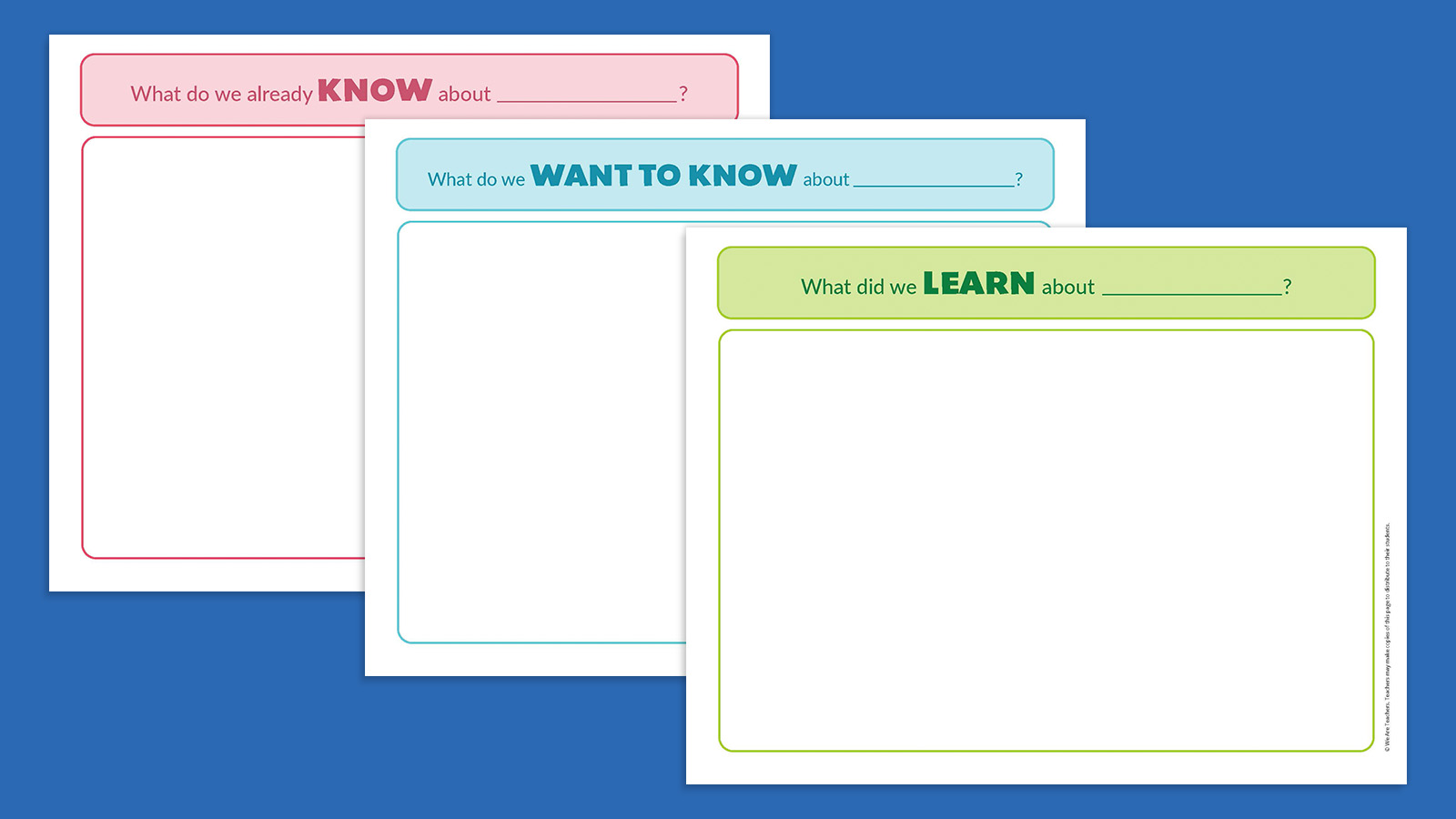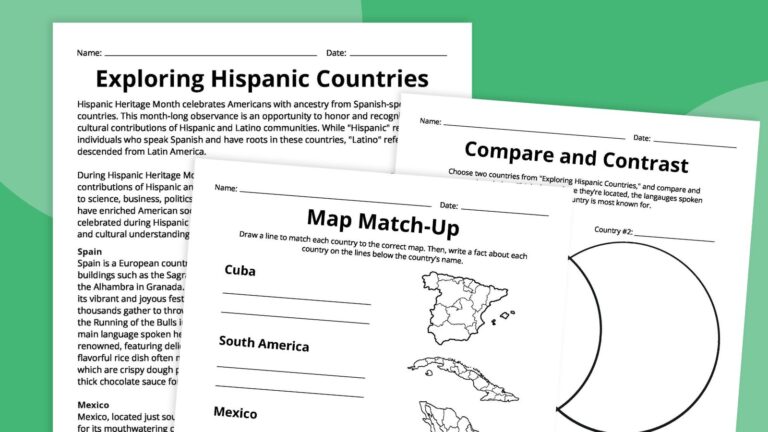Know/Want-To-Know/Learned organizers, commonly known as K-W-L or KWL charts, have been popular since they were introduced by Donna Ogle in 1986. Initially, these charts were used in ELA with nonfiction reading to encourage better comprehension and critical thinking. Over time, teachers and students realized that KWL graphic organizers were ideal to use with nearly any subject, and they even developed some expansions. Our big KWL chart bundle includes options for every age and subject, and it’s completely free!
How To Use a KWL Chart
Encourage your students to think of these graphic organizers as a living document, one they’ll add to throughout their study of a particular topic. In the beginning, introduce the chart and practice completing it together, filling in a large KWL chart of your own to share with the whole class. Over time, students can create and complete these charts on their own, helping to organize their thinking as they learn.
Here’s a closer look at the three sections of the original KWL chart.
Know
This section is a place for students to record their personal background knowledge on a subject. Ask them to think about what they already know and jot it down here. Sometimes they might not have much to write down at all, and that’s OK too!
As students begin their study of the topic, they should return to this section regularly to see if their initial knowledge was actually correct. Some teachers even like to refer to this section as “What I Think I Know,” reminding students that it’s common to have misconceptions and incorrect information. This helps kids think more critically and avoid making assumptions without facts to back them up.
Want To Know
Now it’s time to think about what students want to know or learn about a topic. (Some people use the “W” to stand for “Wonder” instead.) Encourage them to think about the subject from a variety of perspectives, and make a big list of questions. If they’re stuck, pose the classic series, “Who? What? Where? When? Why? How?” to get them started.
Once kids have a list, they can work to find answers to all their questions, or they can circle two or three they especially want to focus on. Remind students that they can return to this column throughout their learning, adding new questions as they arise. Thinking about their own personal questions on a topic makes learning more intentional and meaningful.
Learned
In the final section, students record important information they’ve learned. This can correspond to the questions they asked in the “Want To Know” section or can simply be new facts they hadn’t considered before. They might even have learned information that changes what they originally listed in the Know section.
Before you finish with a topic, invite students to return to the “Want To Know” section to see if there are any burning questions they’d still like to find the answers to. This drives home the idea that learning is an ongoing process, one that can be personalized for every student.
KWL Chart Alternatives and Updates
In the nearly 40 years since the K-W-L model was first introduced, teachers have refined and adapted it to make it a more meaningful and useful tool. These are some of the most common and popular changes and adaptations.
KWHL
This chart adds a fourth section, “How I Will Find Out.” It invites students to consider how they’ll learn the answers to their questions in the “Want To Know” section. For instance, they might read a book, do research on the Internet, talk to someone who works in the field, conduct a science experiment, and so on. This additional step makes learning a more active process, with students taking charge of the process.
KWLQ
This version also adds a fourth section, “New Questions,” usually signified with the letter Q. It’s a place for students to write down new questions they have after learning more about a subject. These questions might not be answered in class or as part of their current research. Instead, they encourage kids to continue learning on their own, exploring more about any topic that fascinates them.
KWHLAQ
In this big expansion on the original, students add both “How I Will Find Out” and “New Questions,” plus one more section: “Action.” Essentially, it asks learners to consider how they will apply the new knowledge they’ve acquired. For example, after learning about the water cycle, students might decide to conserve water at home by turning off the tap when they’re brushing their teeth, or taking shorter showers. This helps students make personal connections to what they’ve learned, and understand its importance in their own lives.
Free KWL Chart Printable Bundle
Grab your free charts!
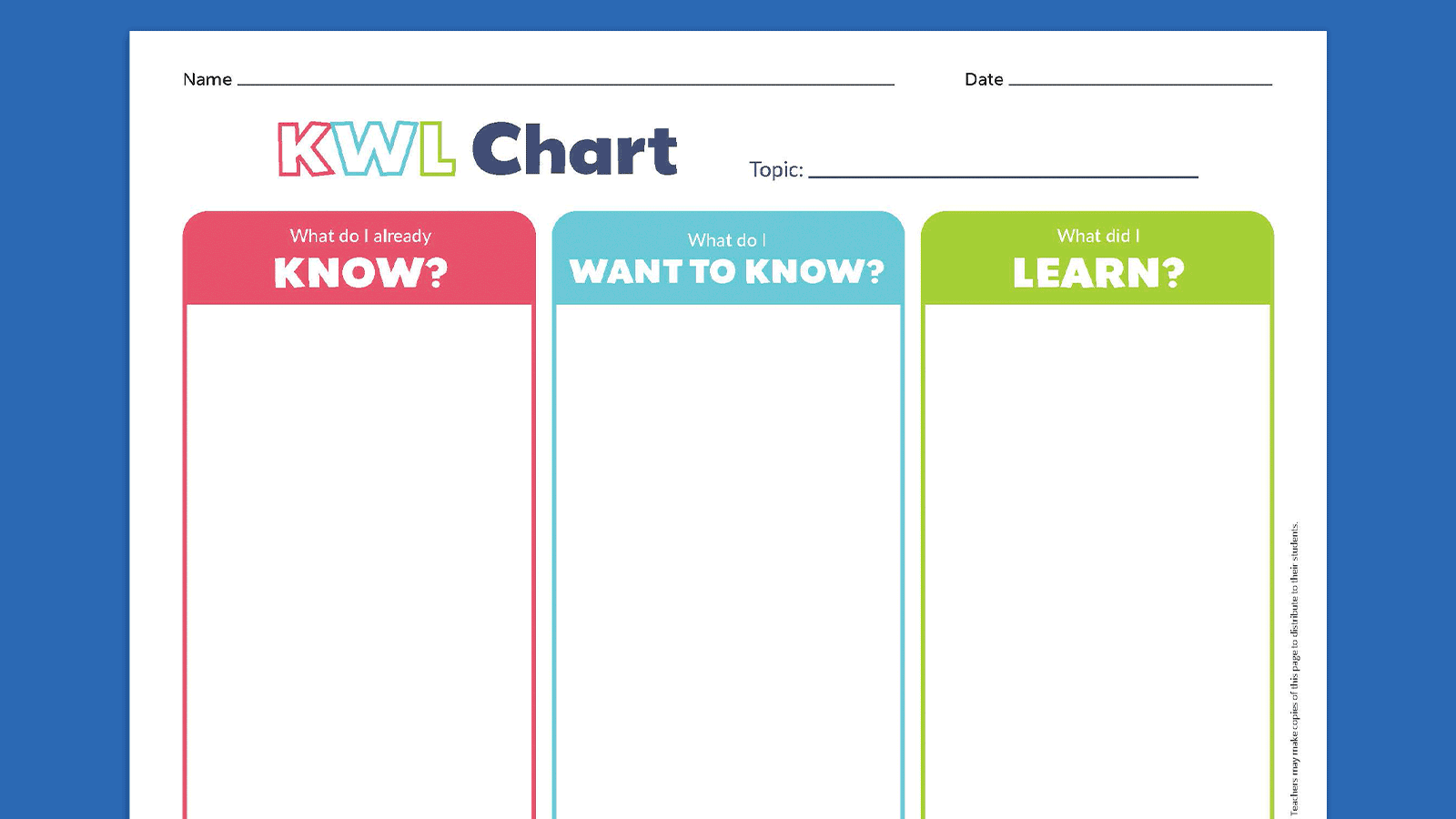
Just fill out the form on this page to get free printable copies of all of the KWL charts above.
